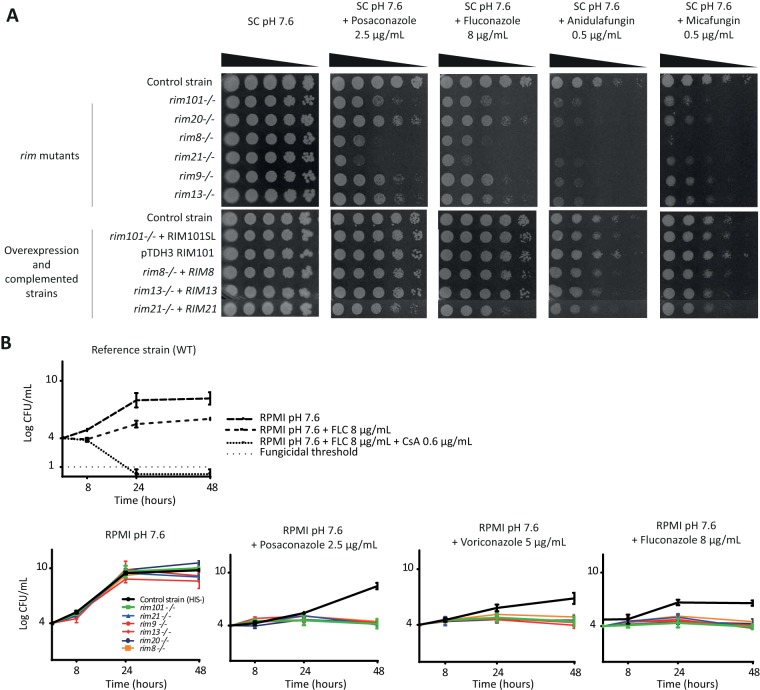FIG 2.
The Rim pathway is involved in antifungal tolerance in C. albicans. (A) Colony formation assays. Cells were plated in 10-fold dilutions in the presence of fluconazole (8 μg/ml), posaconazole (2.5 μg/ml), anidulafungin (0.5 μg/ml), or micafungin (0.5 μg/ml) in SC medium buffered at pH 7.6. The 6 rim mutants were hypersensitive to the different antifungal drugs. (B) (Top) Time-kill curves for the SC5314 reference strain in the presence of fluconazole (FLC; 8 μg/ml) or a combination of fluconazole and the calcineurin inhibitor cyclosporine (CsA; 0.6 μg/ml) at pH 7.6. Inhibition of antifungal tolerance by CsA restored the fungicidal effect of FLC. (Bottom) Time-kill curves for the rim mutants and a control strain in the presence of posaconazole (2.5 μg/ml), voriconazole (5 μg/ml), or fluconazole (8 μg/ml) at pH 7.6. Growth rates of the mutants at 48 h were significantly lower than those of the control strain with the three azole compounds (P < 0.001).

